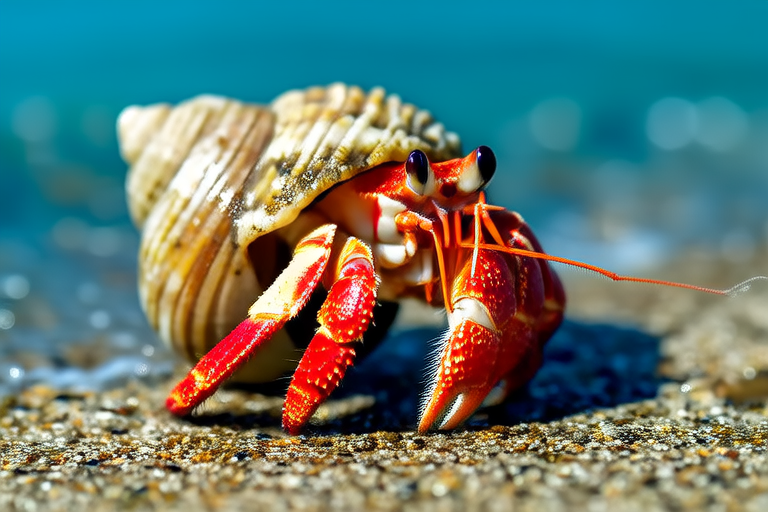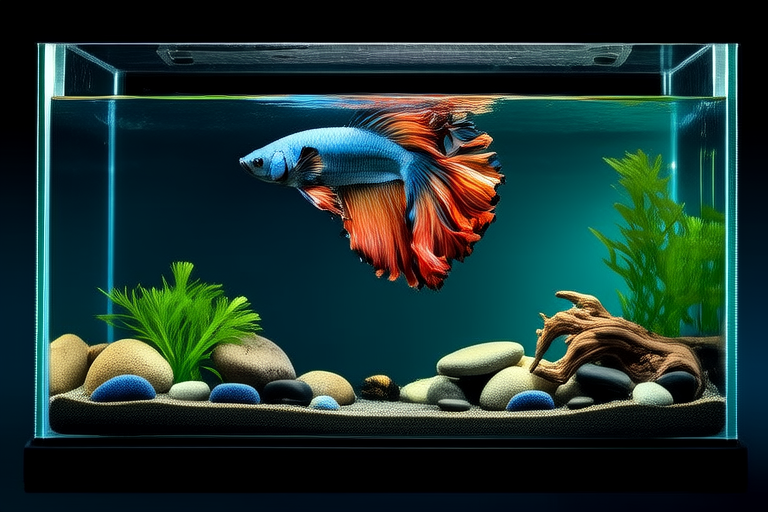
How to Create the Ultimate Habitat for Your Happy Hermit Crab
Welcome to the wonderful world of hermit crabs! These fascinating creatures make delightful pets that can bring joy and fascination into your home. However, creating the perfect habitat for your hermit crab is crucial for their health and happiness. This comprehensive guide will walk you through everything you need to know about setting up an ideal living space for your crustacean companion.
Choosing the Right Tank Size
The first step in creating the ultimate habitat for your hermit crab is selecting the right tank size. Hermit crabs are social creatures and thrive in environments with enough space to move around comfortably. A general rule of thumb is to provide at least 10 gallons of space per crab. For a single hermit crab, a 10-gallon tank is sufficient; however, if you plan to have multiple hermit crabs, consider getting a larger tank to accommodate them all.
Remember, hermit crabs are nocturnal, so they will spend most of their active time during the night. Providing ample space ensures they have room to explore and exercise, which is vital for their physical and mental well-being.
Selecting the Perfect Substrate
The substrate, or bedding material, plays a critical role in your hermit crab’s habitat. It provides a comfortable surface for burrowing, climbing, and hiding. The ideal substrate should be soft, safe, and capable of retaining moisture. Some popular choices include:
- Coco coir: This organic fiber is made from coconut husks and retains moisture well, making it an excellent choice for hermit crab habitats.
- Bark chips: Shredded bark chips provide a natural look and feel while offering good drainage properties.
- Diatomaceous earth (DE): DE helps control pests like mites and prevents mold growth. It should only be used sparingly and mixed with other substrates.
Avoid using sand or gravel as substrate, as these materials can irritate your hermit crab’s delicate gills and legs. Instead, opt for a mix of coco coir and bark chips to create a balanced and comfortable environment.
Maintaining Optimal Temperature and Humidity
Hermit crabs are tropical creatures and require specific environmental conditions to thrive. Maintaining the correct temperature and humidity levels is essential for their health and longevity.
Temperature: The ideal temperature range for hermit crabs is between 75°F and 85°F (24°C to 29°C). You can achieve this by placing a heat mat or under-tank heater on one side of the tank. This creates a gradient, allowing your hermit crabs to regulate their body temperature by moving between warmer and cooler areas.
Humidity: Hermit crabs need high humidity levels, ideally between 70% and 80%. To maintain this level, you can use a hygrometer to monitor humidity and a misting system or humidifier to add moisture as needed. Additionally, ensure there is always fresh water available in a shallow dish for your hermit crabs to drink and bathe.
Decorations for Hiding and Climbing
Your hermit crab’s habitat should offer plenty of opportunities for hiding, climbing, and exploring. Incorporating various decorations not only enhances the aesthetic appeal of the tank but also provides essential enrichment for your pet.
- Hiding spots: Hermit crabs love to hide and feel secure in their surroundings. You can use cork bark, driftwood, or artificial plants to create cozy hiding places.
- Climbing structures: Providing branches, rocks, or commercially available climbing toys allows your hermit crabs to climb and explore their environment. Ensure these structures are stable and securely anchored to prevent accidents.
- Shell variety: Hermit crabs periodically change their shells as they grow. Offering a selection of different-sized shells encourages them to explore and choose the best fit. Make sure the shells are clean and free from harmful chemicals.
Water Conditions for Shell Changing
Hermit crabs require access to both freshwater and saltwater for proper hydration and shell maintenance. Freshwater should be provided in a shallow dish for drinking and bathing. Saltwater, on the other hand, is essential for shell cleaning and conditioning.
To prepare saltwater, use a marine aquarium salt specifically designed for hermit crabs. Follow the instructions on the package to ensure the correct salinity level. Place the saltwater dish near the freshwater dish to mimic the natural environment where hermit crabs live.
Regularly clean both the freshwater and saltwater dishes to prevent bacterial growth and keep the water fresh. Change the water every few days or whenever it becomes cloudy.
Dietary Needs of Your Hermit Crab
Feeding your hermit crab a balanced diet is key to their overall health and vitality. Hermit crabs are omnivores and enjoy a wide variety of foods, including fruits, vegetables, proteins, and commercial hermit crab food. Here are some nutritious options to incorporate into their diet:
- Fruits: Offer small pieces of fresh fruits like apples, bananas, grapes, and strawberries. Avoid citrus fruits, as they can be too acidic for hermit crabs.
- Vegetables: Leafy greens, carrots, and bell peppers are great sources of vitamins and minerals. Chop them into small pieces for easy consumption.
- Proteins: Provide occasional protein sources such as cooked chicken, fish, or boiled eggs. Be sure to remove any bones or skin before offering the food.
- Commercial hermit crab food: These specially formulated diets provide essential nutrients and can be sprinkled over other foods or offered separately.
Place the food in shallow dishes or on the substrate within the tank. Remove any uneaten food after a day to prevent spoilage and maintain hygiene.
Maintaining a Healthy Environment
To ensure your hermit crab remains healthy and happy, it’s important to maintain a clean and well-maintained habitat. Here are some tips for keeping your hermit crab’s environment in top condition:
- Regular cleaning: Clean the tank and its accessories once a week. Remove any waste, uneaten food, and dirty substrate. Rinse the decorations and replace the substrate as needed.
- Monitor temperature and humidity: Check the temperature and humidity levels daily to ensure they remain within the recommended range. Adjust heating and humidifying equipment as necessary.
- Water quality: Regularly check the freshness of both the freshwater and saltwater dishes. Replace the water when it becomes cloudy or contaminated.
- Observe behavior: Pay attention to your hermit crab’s behavior for signs of stress or illness. If you notice any unusual symptoms, consult a veterinarian specializing in exotic pets for advice.
Conclusion
Creating the ultimate habitat for your hermit crab involves careful consideration of tank size, substrate, temperature, humidity, decorations, water conditions, and diet. By following these guidelines, you’ll provide your crustacean companion with a safe, comfortable, and enriching environment that promotes their health and happiness. Remember, a well-cared-for hermit crab can live for many years, bringing joy and wonder into your life. Enjoy the journey of caring for these fascinating creatures!




